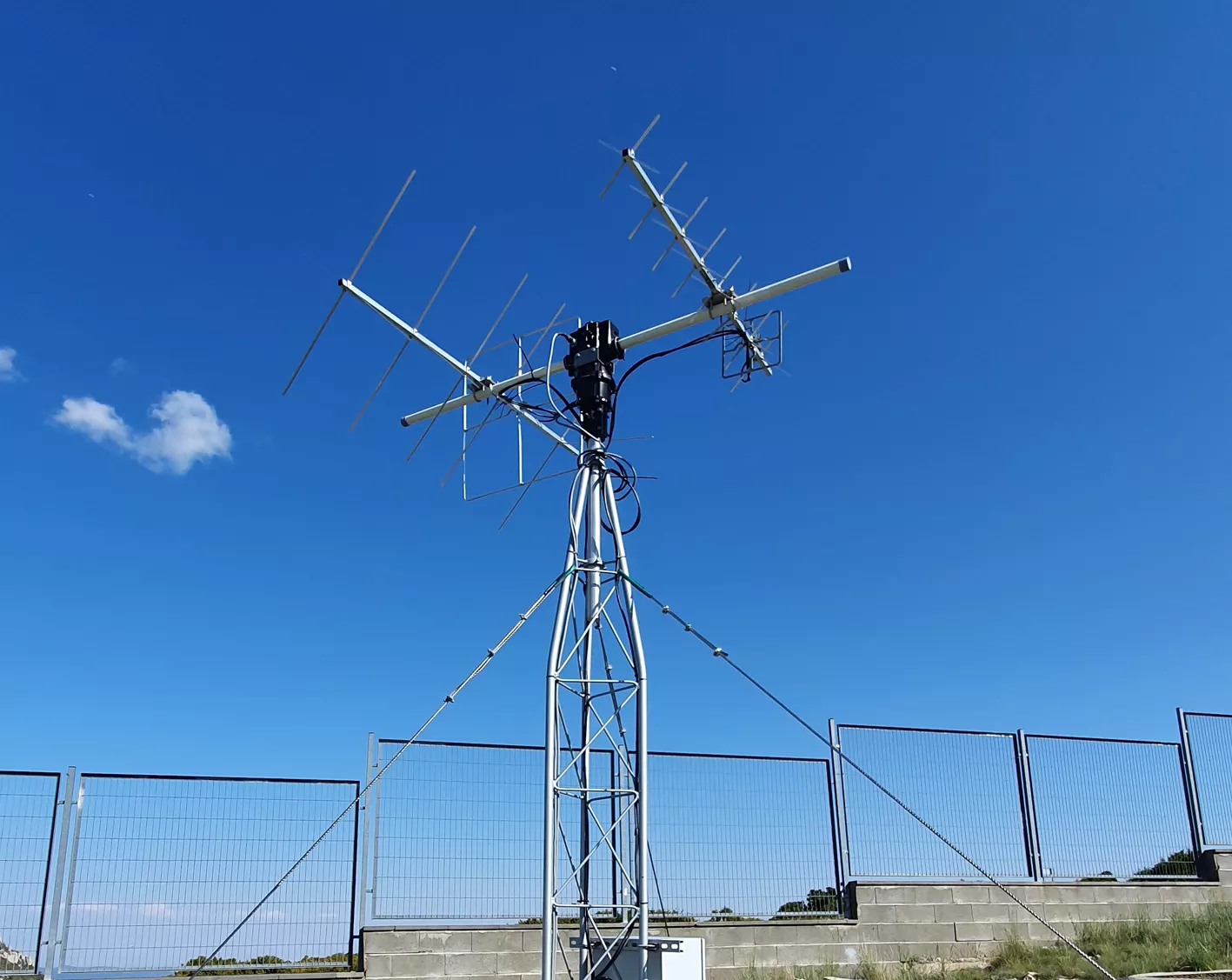Ground station
In the latest years, significant efforts have been made to build a communications station with low-orbit satellites at the Montsec Observatory. The result is the Montsec Satellite Ground Station.
The new space economy (or NewSpace) represents a disruptive leap in the use of space thanks to the deployment of small, cheaper and rapidly developing satellites (nanosatellites).
In the latest years, significant efforts have been made to build a communications station with low-orbit satellites at the Montsec Observatory (OdM). The result is the Montsec Satellite Ground Station (SGSMontsec). This station was designed and installed by the NanoSat Lab of the Universitat Politècnica de Catalunya · BarcelonaTech (UPC) and is managed in collaboration with the IEEC.
The privileged location of the OdM, free of obstacles on the horizon and with low pollution of the radioelectric space, makes it an ideal place for the ground communications station. The antennas are controlled from the Barcelona Operations Centre, from where the satellite passes are planned and the data is processed. After several modifications and improvements, the SGSMontsec station was officially inaugurated on June 12, 2021.

UHF/VHF bands antenna
The amateur UHF/VHF Yagi type band antenna was initially conceived by the NanoSat Lab to be installed on the roof of one of the buildings of the North Campus of the UPC of Barcelona. Due to the radioelectric noise and the impact on the visibility of the city’s buildings, in 2018 it was decided to move it to the Montsec Observatory, together with the control equipment in the Joan Oró Telescope building.
S-band antenna
In 2019, an S-band antenna with reception capacity was installed, with a 3-metre diameter disc, in order to expand the capabilities of the communications station. A dedicated room was also created in the service building of the Joan Oró Telescope, where all the electronic and control equipment for the different antennas are housed, and which consolidates the SGSMontsec infrastructure. The main missions in which the S-band antenna has participated are FSSCat, from the NanoSat Lab in collaboration with the European Space Agency (ESA), and Enxaneta, the first nanosatellite of the NewSpace Strategy of Catalonia promoted and developed jointly by the Generalitat de Catalunya and the IEEC.
Currently, the NanoSat Lab and the IEEC are working together to expand the capabilities of the S-band antenna to transmission. It is planned that the antenna with reception and transmission capabilities will go into service during 2023.

UHF Band (TX/RX)
435-438 MHz
VHF Band (TX/RX)
144-145 MHz
S-Band (RX)
2200-2290 MHz
Satellite Tracking
UHF/VHF/S-Band
VHF G/T
-16 dB
UHF G/T
-14 dB
S-Band G/T
9 dB